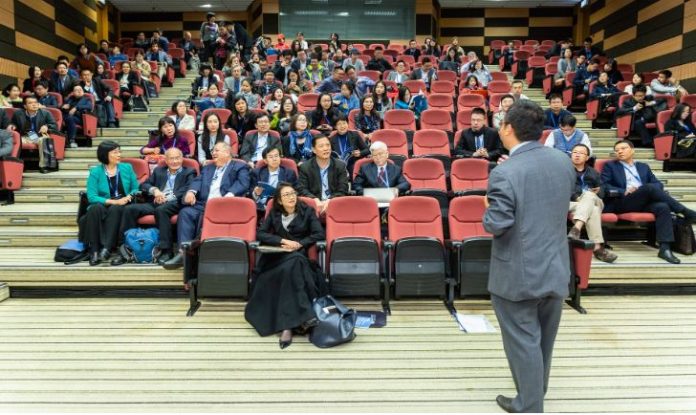When you are preparing for a speech, the utmost in your mind should be how to grab audience attention. It does not matter whether your speech is to sell an idea, a product or to get people to do something. At the end of it, you need to have convinced them of something. How can you achieve this?
There is the usual structure that you need to follow of having an introduction, a body and the conclusion. Another basic thing to remember is to say what you are going to say, say it and say it again. Remember that you want to reinforce the main theme that you are presenting.
Aside from the usual structure, what are some techniques that you can use to grab audience attention?
1. Repetition of Words at the Beginning of Successive Sentences
One technique is the repetition of a word or words at the beginning of two or more successive clauses or sentences. An example would be Winston Churchill’s “We shall fight on the beaches, we shall fight on the landing grounds, we shall fight in the fields and in the streets, we shall fight in the hills”.
Just imagine speaking at your company’s sales convention and saying, “We shall plan, we shall strategize, we shall work smart and hard in closing the deals and when we win, we shall celebrate”.
This is called an anaphora. When using an anaphora, there is repetition that emphasizes and has a tendency to reinforce the message.
2. Repetition of Words at the End of Successive Sentences
Another technique is the repetition of a word or words at the end of two or more successive clauses or sentences. An example of this is from a 1959 newspaper column by Dorothy Kilgallen. ” Success hasn’t changed Frank Sinatra.
When he was unappreciated and obscure, he was hot-tempered, egotistical, extravagant, and moody. Now that he is rich and famous… he is still hot-tempered, egotistical, extravagant, and moody.”
Taking again the case of a sales convention, you could say, “During good times we plan, strategize, work hard, win deals and celebrate together. Now, even during tough times, we shall plan, strategize, work hard, win deals and celebrate together.”
This is referred to as epiphora.
3. Repetition of Words in Any Part of the Sentences
The third technique is the repetition in any part of the paragraph or sentences. A famous example of this is from Lincoln’s Gettysburg Address of November 19, 1863. “…That we here highly resolve that these dead shall not have died in vain; that this nation shall have a new birth of freedom; and that this government of the people, by the people, for the people, shall not perish from the earth.”
Again taking the example of a sales convention, you could say, “Somehow along the way, we seemed to have lost our competitiveness, lost our passion and lost our leadership in sales. Let us work together to regain the competitiveness, to regain our passion and to regain our leadership.”
4. Metaphors
Metaphors are another technique that you should use to grab audience attention. Sometimes a speech or presentation may contain a lot of information and explanation, which you can provide in detail. The important thing though is if the audience is able to capture it.
This is where metaphors can make a difference. You could tell the sales team that they should go first for the “low hanging fruits” while at the same time working on other opportunities that will take longer to develop.
The “sales funnel” is an excellent metaphor that has become part of sales terminology. By using this terminology, it becomes so much easier to relate to the concept.
5. Rhythm and Cadence
You can also use rhythm and cadence like “Genius is ninety percent perspiration and ten percent inspiration”; to get across the idea that being smart is not enough. There is also hard work involved to convert an idea to a successful end.
6. Touch the Audience with a Story
It is when you are concluding that you need to “touch” the audience and leave them feeling the message that you want to get across. Emotional stories are excellent for this, especially if they can already see how it can apply to them.
7. Slogans
If you can tie in a slogan together with your story, you will leave them with the slogan echoing in the mind. The main objectives of a slogan are to attract attention, stimulate, raise curiosity and drive to action.
Some examples of slogans are:
– Deutsche Bank’s “A Passion to Perform”
– Procter & Gamble’s “Touching Lives, Improving Life”
– L’oreal Cosmetics’ “Because you’re worth it”
There are many techniques that can be used to grab the attention of your audience. Make sure that they are within the flow of your speech or presentation. Remember it is not about sounding smart.
It is about capturing their attention first, saying it in a way that it is easy for them to understand and finally leaving them emotionally involved with the theme of your speech and wanting to take action where applicable.

